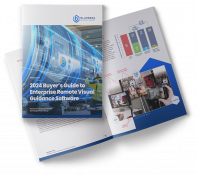Help Lightning Blog
How Your Company Can Increase CSAT Scores and NPS Scores

If you’re looking to increase CSAT, then chances are, you’re likely to move the needle on your NPS scores too. And that’s because these two metrics are tightly intertwined: happy customers are likely to repeatedly buy from your business, recommend their friends and family to your services, and even leave glowing reviews where possible (while the opposite often proves true for unsatisfied customers).
As Medallia puts it, your happy customers (who often fall in the bucket of promoters, though not always) are the “enthusiastic evangelists” who will convert others to your company. On the other hand, your detractors are those who “aren’t particularly thrilled by the product or service… and could potentially damage the company’s reputation through negative word of mouth.”
As such, when you look to increase CSAT, you’re inadvertently targeting an increase to your NPS score too – so what can you do to get both these ratings trending upwards?
That’s what we’re about to dive into.
What Is An NPS Score?
Before offering some tips on how to increase NPS scores, it’s important to understand what NPS means, exactly.
NPS stands for net promoter score, and it’s a number on a scale from -100 to 100.
It’s considered the gold standard of customer experience metrics, having been first introduced in 2003 by Bain and Company, and now used by millions of businesses to measure and track customer sentiment toward their company. It does this through asking one simple question: how likely are you to recommend [product/service/business] to a friend or colleague?
Respondents then give a rating between 0 and 10. Based on their rating, respondents fall into one of three buckets:
- Promoters
- These are individuals who respond with a 9 or 10. They’re loyal and enthusiastic customers.
- Passives
- These are individuals who respond with a 7 or 8. They’re satisfied, but not shouting their loyalty from the rooftops.
- Detractors
- These are individuals who respond with numbers between 0 and 6. They’re unhappy, unlikely to buy from your business again, and are more likely to talk badly about your business, online or in person.
What Is The Customer Satisfaction (CSAT) Score?
While your NPS score is gauged based on one question, measuring your CSAT (customer satisfaction) score can take a couple of different forms.
According to Twilio, the following are popular ways to gauge CSAT:
- Customer satisfaction surveys
- This can be through email, SMS, web chat, or phone call
- Face-to-face interactions
- This can be more difficult to objectively measure. But trackable actions such as tips are useful in measuring CSAT in a more holistic way.
Sometimes it can be difficult to hash out the nuances between CSAT and NPS, and essentially, here is the major differentiator: CSAT scores are measured immediately after a business interaction, and focus on how that customer feels. On the flip side, NPS measures how likely a customer is to refer a friend or colleague to a business (and though their personal feelings certainly influence their response, they’re not specifically asked about their own experience).
So, though the two are different, it appears that when you increase CSAT you’re likely to also increase NPS scores.
4 Ways To Increase CSAT (And Increase NPS Scores Too!)
1. Send out CSAT Surveys Immediately
In order to find the weak link in your customer service chain, it’s imperative that you send out CSAT surveys immediately after a customer interaction. This is when both parties are most likely to recall why a dispute or problem could not be resolved. It could also help identify where a miscommunication or misunderstanding is arising from.
Ask for as many details as possible, in order to hash out the crux of the issue and better understand where the potential for customer churn is coming from.
2. Be Proactive In Trouble-Shooting
If your customer interacted with a chat bot, posted a negative Google review, or is otherwise dissatisfied, you can take action. Give them a call to figure out what went wrong, and how you can make it right.
The next most powerful testimony compared to an immediately happy customer is one who was dissatisfied. But can now say with authority that you remedied the issue immediately, with empathy and care.
3. Assist Customer-Facing Employees
If there appears to be a consistent hiccup in your customer life cycle – specifically after contacting customer service directly – then it may be that: 1) your agents aren’t trained to a high enough standard (or at least that achieved by your competitors), or 2) they’re not given the tools or means to remedy problems to a satisfactory level.
One excellent way to empower customer service representatives – in addition to other teams, such as field service technicians and sales staff, depending on your industry – is through the adoption of remote-first service.
This AR-enabled technology offers a lot of value – all of which are critical factors that influence customer satisfaction ratings:
- vastly reduces miscommunications
- lowers time customers have to spend explaining an issue
- facilitates cross-department collaboration
- allows for optimized employee training
- increases phone-fix rate metrics
4. Review Other KPIs
Part of fully understanding your CSAT and NPS involves reviewing other influential KPIs that customer-facing employees have little power over. Specifically, the following metrics which may occur way before a customer gets on the phone should be considered:
- ticket volumes
- ticket backlogs
- product recalls
- unscheduled down time
- technical issues
These are common offenders that can heavily impact customer sentiment toward your products and services.
Want to learn more about how remote first service could positively increase CSAT and NPS scores for your business? Request a Help Lightning no-obligation, no-cost demo.












